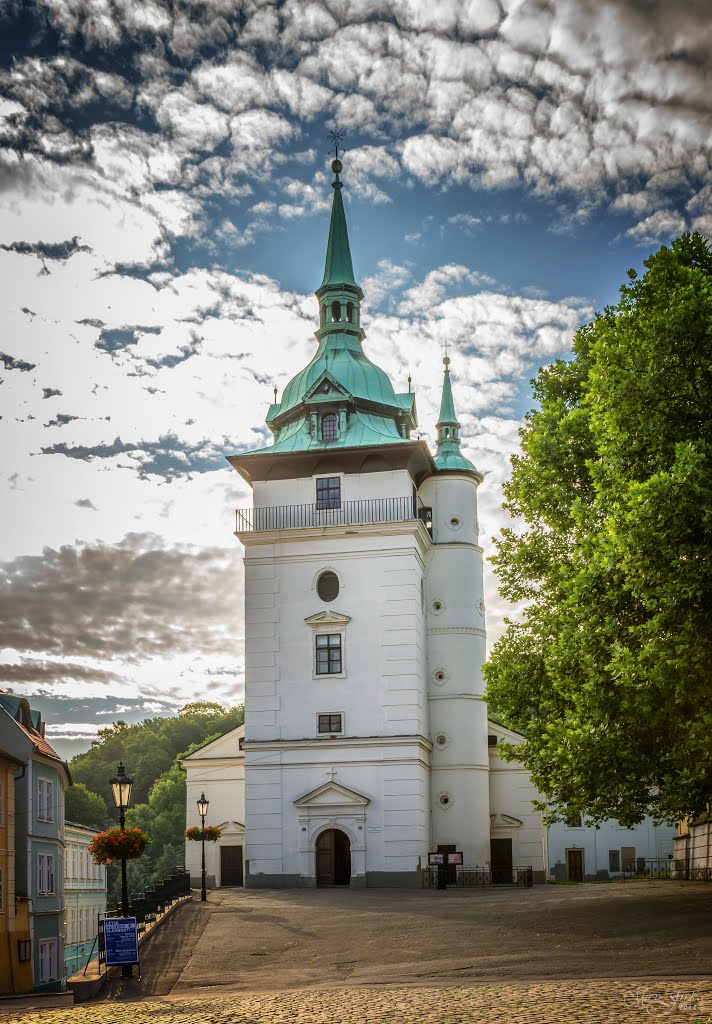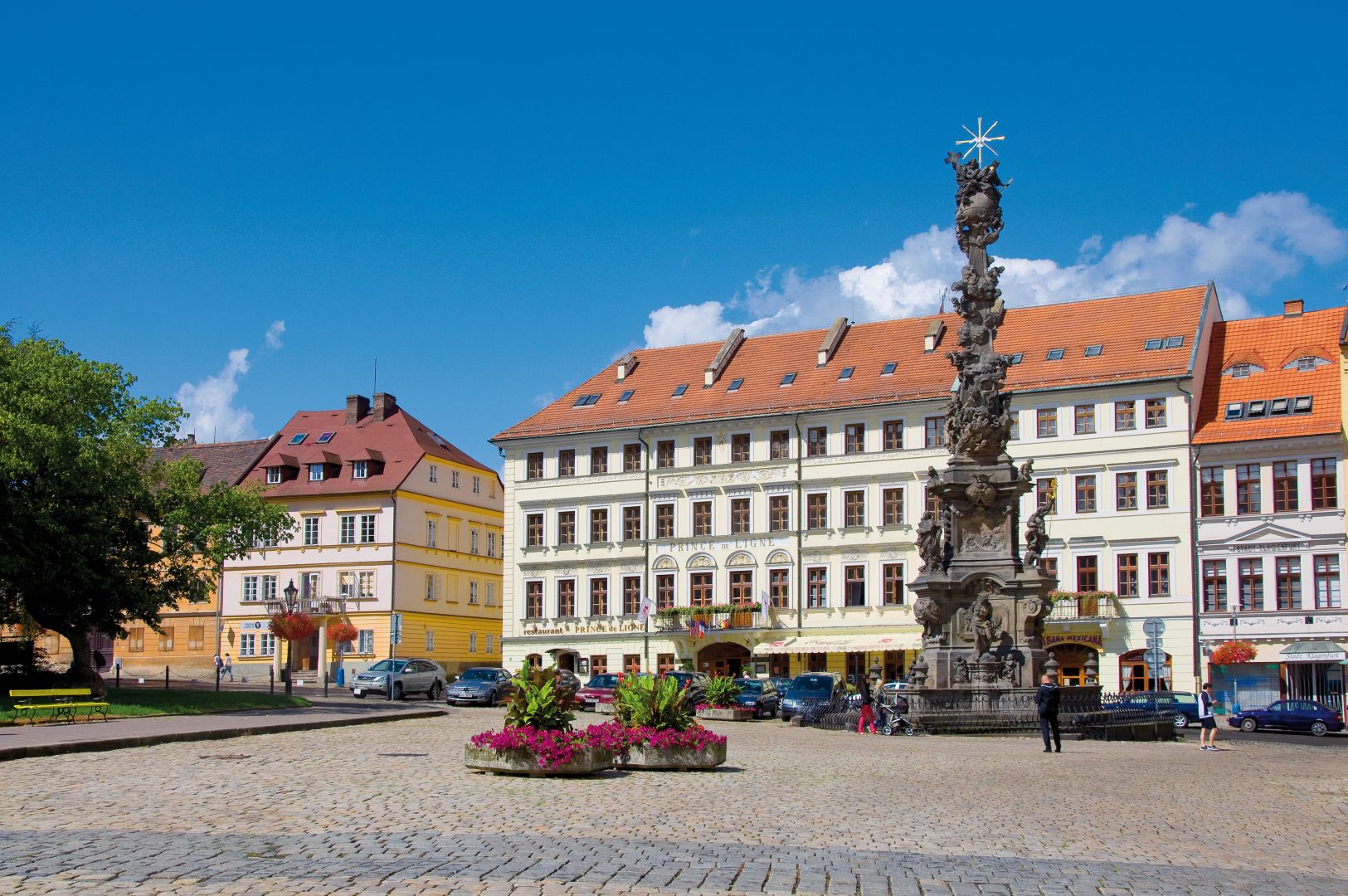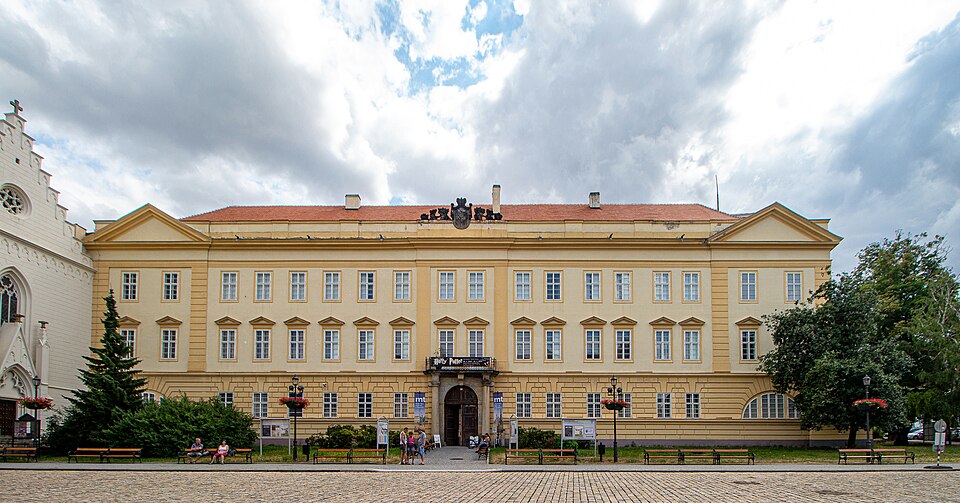













Take a journey to Teplice, the oldest spa town in Central Europe, and explore its rich history and unique atmosphere at your own pace. A comfortable bus will take you from Prague directly to the Royal Baths, where you will have 8 hours to explore on your own. With a guided mobile app in one of nine languages, you will learn fascinating stories about this historic city and its famous visitors, including Beethoven and Goethe. Take the opportunity to visit the luxurious Thermalarium, where you can bathe in 100% thermal water.
The price of the tour includes admission to the Church of the Exaltation of the Holy Cross, which houses the relics of St. Clari, one of the city’s patron saints. Your adventure also includes a ticket for the Humboldt tourist train (in the summer season), which will take you comfortably through the most important sites of Teplice’s historical and spa center. Admire the beautiful colonnades, magnificent parks, and architecture inspired by European royal cities.
After a day of exploring, you will comfortably return to Prague. This tour is ideal for those who want to explore Teplice without a guide, but with all the information at hand. Enjoy the freedom of discovery and experience the atmosphere of a royal spa in the heart of Europe!

The original historical preserved town square, whose beauty is highlighted by the number of significant historical buildings. It’s dominated by the Teplice château, which was built on the remains of a Dominican monastery founded in the twelfth century by second Queen of Bohemia, Judith of Thuringia. Zámecké náměstí Square was the focal point of all of the important historical events of the city. It’s usually the first place in Teplice that visitors and tourists see in Teplice and the starting point of their discovery of the city.

This building, the sacred dominant of Zámecké náměstí Square, was dedicated to the patron saint of the city of Teplice, St John the Baptist. The cathedral was built in the sixteenth century on the foundations of a much older cathedral that also included the adjacent cemetery. The cathedral houses the tomb of the Clary-Aldringen family, who were the last noble family to own the Teplice estate. It was reconstructed into its current appearance at the beginning of the eighteenth century in the Baroque style, and the formerly-inhabited lookout tower became its dominating feature. Today it has become a popular lookout site for tourists, offering a breath-taking view of the oldest section of the oldest spa city in central Europe. The lookout and apex of the tower also features an exhibit. An admission fee is required to visit the lookout tower.

One of the few Baroque monuments in the city, designed by Bohemia’s most prominent Baroque sculptor and woodcarver, Matthias Bernard Braun, who was highly influenced by Italian art. This over two-hundred-year-old monument embodies not only the idea of warding off the plague (just as in other cities), but also the deep family history of the aristocratic family that owned the Teplice estate. The Holy Trinity Column, which was once also a fountain, is a dominating feature of the square.

This Renaissance château is a clear dominating feature of the historical centre of the city—its origins dating back to the eleventh century, when one of the oldest women’s monasteries in central Europe was built on this site. The Benedictine order and monastery in Teplice was established at the behest of second Queen of Bohemia, Judith of Thuringia, who is was also buried in the monastery complex. Visitors of the château will see Romanesque, Gothic, and Classicist styles. The château began to unfold into its full beauty at the turn of the nineteenth century, when the estate was owned by a union of the large Clary Aldringen dynasties, and the city began to be referred to—particularly in aristocratic circles—as Little Paris, the Salon of Europe, and the Exhibition Hall of the Monarchy. Currently, the château houses the regional museum, which includes a scholarly history department as well as a number of gorgeous exhibits that are open to the public. These range from an exhibit on Romanesque monasticism, through an exhibit on the history of spa culture in the local area, to a number of additional thematic historical exhibits. Admission fees for the château and exhibits apply.

You find yourself at the memorial of prominent German poet Johann Gottfried Seume—a writer and adventurer. He studied history and philosophy. He fought as an officer in the armies of several European rulers. He ultimately left the army of the Russian czar due to serious illness. Seume hoped to be cured at the Teplice spas; he borrowed money for his treatments, and came to Teplice to be treated. He died ten days after his arrival. Seume was interred next to the Chapel of the Discovery of the Holy Cross, which stands behind this memorial. His grave is the only one that has remained here from the former cemetery.

St Bartholomew Church was initiated by Prussian king, Frederick William the Fourth, in the mid-nineteenth century. The building was conceived as a Neo-Renaissance three-naved brick basilica in the style of ancient Christian churches. It was designated for worshippers of the Protestant faith. The church served as an ecclesiastical structure as late as shortly after the Second World War, and was then closed. For decades it fell into disrepair. Currently, it houses an exhibition gallery that boasts several exhibits, a resting place, as well as a concert hall that takes advantage of the excellent acoustics of the space, primarily for classical music and acoustic style music concerts. Behind the church lies an area that was once the city’s oldest Jewish cemetery, but was backfilled—gravestones and all—in nineteen thirty-nine. The terrace above the balustrade offers gorgeous, wide-angle views of the Ore Mountains. From here, you can even see the part of the Ore Mountains whose old mining works are inscribed in the list of UNESCO monuments.
An unforgettable experience with Premiant City Tour






